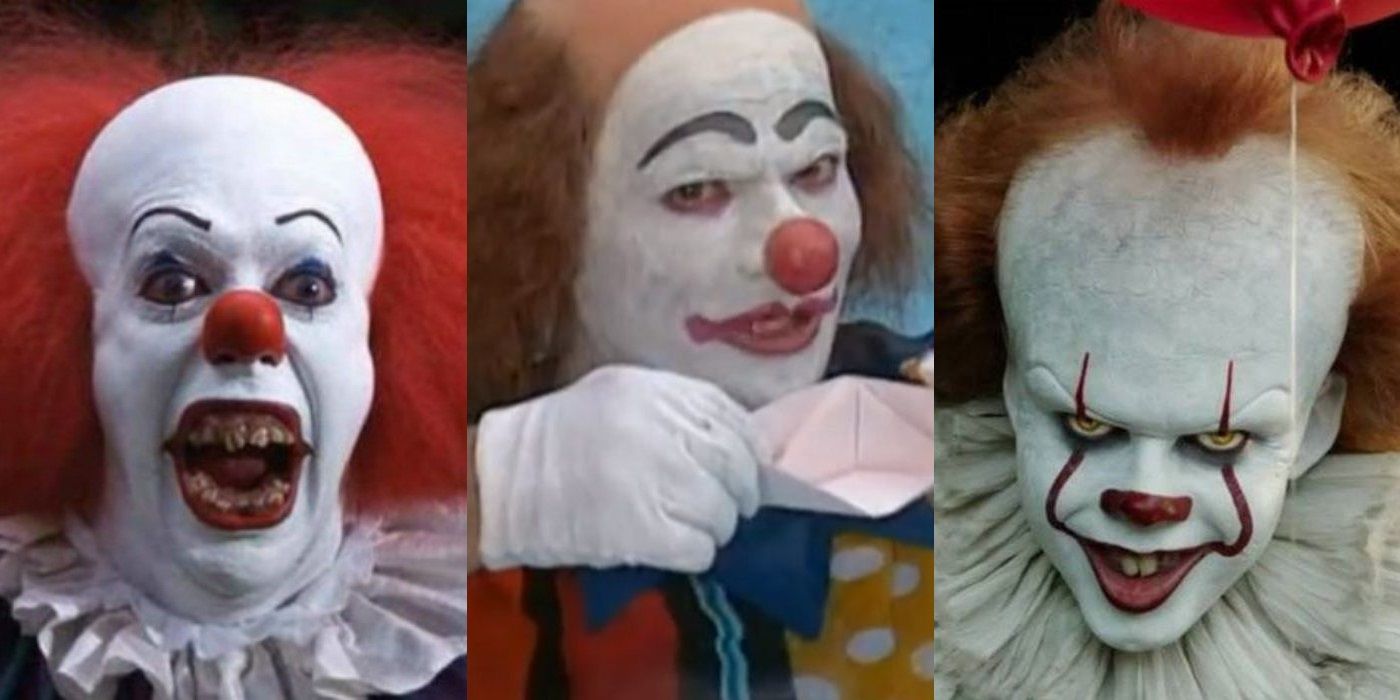A video has been released charting the evolving forms of Pennywise, the shapeshifting fear demon from the various adaptations of Stephen King’s It. The story originated as the second-longest of Stephen King’s novels (after the sprawling saga of The Stand) and over two points in time relates the struggle of a group of outcasts as they battle the child-eating monster.
It has so far been adapted three times. First was in 1990 with what is described as a miniseries, but is closer to a pair of TV movies as both ‘episodes’ are over 90 minutes long and over the two of them tell the entire story. Airing throughout the entirety of 1998, 52-episode Indian series Woh (simply the word ‘it’ in Hindi) was an adaptation of the miniseries rather than the novel, and featured a different and less cosmic backstory for the eponymous menace that explains his motivation. Most recently is Andy Muschietti’s acclaimed duo of IT and It Chapter 2 that reintroduced the story for modern audiences, and managed to push horror movies a little bit further towards their deserved mainstream acceptability.
The video from Tell It Animated charts the different looks of Pennywise featured in each of the adaptations. Using the aid of cartoon visuals, the details that make up each version of his appearance are explained, and also touches on the various forms he takes other than the demonic clown, such as the variations on Universal Monsters from the miniseries (which were taken directly from the novel), and the lanky witch and leprous hobo from the recent films.
Tell It Animated has produced a number of videos, similarly charting the likes of the myriad iterations Godzilla has had over 65 years and dozens of movies; the various reinventions and parodies of Ghostface from postmodern slasher satire saga Scream; and the look of Captain America from the ’40s serial, ‘70s cheese and 1990 abomination to the MCU’s Cap we know and love today.
It is one of the best known of Stephen King’s books (not always for positive reasons) and as the story’s iconic antagonist is defined by its ability to alter its appearance at will, analyzing how it looks is quite appropriate. The video’s descriptions of each of Pennywise’s looks are straightforward and efficient, and demonstrate how simple alterations in appearance can make a huge difference in how a character is perceived, both at a clear surface level and also a more subtle psychological one.
Source: Tell It Animated

